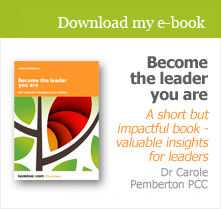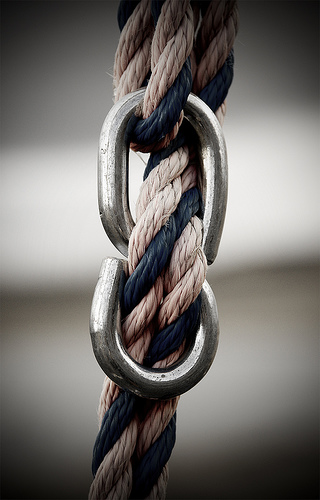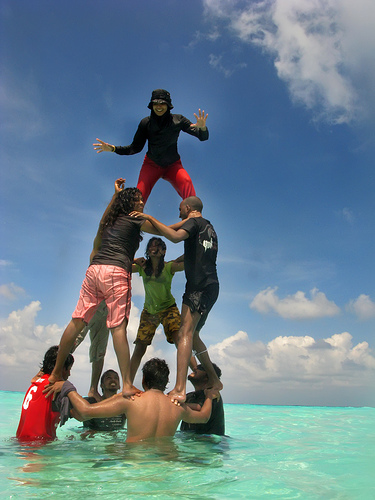blog
A senior hospital Registrar on rotation in a London hospital recently shared a depressing story with me. A dynamic, engaged, talented individual, he was finding himself demotivated and disengaged by the behaviour of his consultant (equivalent to his line manager). She consistently promised to take actions that he was dependent on her for – and she consistently failed to deliver on those promises. When he needed to meet with her she made appointments with him, and invariably failed to appear. She consistently failed to respond to messages and queries.
During his time in this hospital, and as part of his research project that she was supervising, he developed a new procedure which she had approved and which now needed testing: when an ideal opportunity arose for her to use the procedure herself, she dismissed it, claiming she had no time for it. And she seemed not to see the value of his contributions or competence. He was left dismayed and disillusioned, his trust shattered.
I’m noticing the theme of trust coming up increasingly often in executive coaching sessions, both explicitly and as part of the context for clients’ coaching challenges. Of course, we’re living in times when our trust is being eroded in institutions that are the foundations of our society, financial institutions being the most obvious: the banking crisis has changed the national and international mood irrevocably.
At an organisational level some leaders I coach are identifying trust as a key enabler to getting the results their organisations need: they’re understanding – sometimes for the first time in their careers – that their relationships at work need to be nurtured more carefully and that they need to be able to trust their teams if they’re going to get the engagement, commitment and discretionary effort that will take results to the next level.
It can come as a surprise for them to realise that the process is reciprocal: their teams need to be able to trust them too, and consequently they’re working harder on their own transparency, consistency, reliability and accountability, and simply on time spent in personal interaction.
One of the outcomes of development of this kind is that leaders find themselves getting more from their teams. They find that the members of those teams are taking more initiative and more responsibility, so that there’s a healthier balance in the distribution of power and the intensity of control, and less wasted energy on micromanaging.
Photo by Eyþór Björnsson via Compfight
Trust: a critical element of leadership
Trust is a key enabler to getting the results that organisations need. Leaders need to nurture relationships at work and need to be able to trust their teams. And their teams need to be able to trust them too. One of the outcomes of development of this kind is that leaders find themselves getting more from their teams without much apparent effort. They find that the members of those teams take more initiative and more responsibility,
Read more »Twitter announces new two-tier service
Twitter has announced today, 1st April, that they are shifting to a two-tiered service: Everyone can use the basic service, Twttr, but they will only get consonants. For five dollars a month, you can use the premium “Twitter” service, which also includes vowels.
Read more »Making Culture Change Stick
On 10th May in London, our partner ANKLe (A New Kind of Leadership) is running a workshop entitled 'Making Culture Change Stick'. Participants will explore what they mean by culture change and will examine a range of new as well as tried and tested tools and techniques for managing and embedding culture change in organisations.
Read more »Approaching the finishing line of the 30 Day Challenge
The 30 Day Challenge draws to a close. I've been challenged, supported, and held accountable, and I've gained some insights. I'm learning about blogging - and about topics I'd never anticipated - and I'm surprised at how much I'm enjoying the blogging process. I'm on the alert for topics to blog about - and now that I'm blogging twice a week, I feel 'in the groove'. My next step is to ensure that my blog is read and to build a readership.
Read more »Connect!
My core message is ‘Connect’ – make relationships and nurture them. When people connect, they care enough to hear what’s going on for the other person without judging it, pre-empting, advising or interrupting: they just listen. Out of that apparently simple interaction new perspectives, insights and solutions can emerge.
Read more »The other side of the development coin
A humorous short video on the perils implicit in development professionals 'knowing what's good for their clients'.
Read more »The S-curve
The S curve, developed by Dr Peter Robertson, is a model of organisational development. To survive in the long-term, organisations need to jump from the stage of squeezing out efficiencies and closing down the old business model to starting again with designing a new future.
Read more »United Nations launches International Happiness Day
Higher GDP doesn't make people happy. Does being happy enable higher GDP? Does it enable more productivity, creativity and engagement in your organisation? And does being unhappy or stressed diminish your organisation's GDP?
Read more »The crazy ones
"The ones who are crazy enough to think they can change the world are the ones who do."
Read more »Trust at work
Leaders who trust their people, and who are trusted, tend to be rewarded with engagement, motivation, discretionary effort, creativity, retention, integrity and better decision-making. Look to the NHS for some examples of trust that's missing.
Read more »

Click here to receive the occasional interesting e-mail
Click here to receive my free report for coaching sponsors:
Evaluating coaching
Click here for my free report for coaching clients:
How to choose the right coach
You can call Lindsay on
+44/0 20 7112 7001 or
click to send her a message








